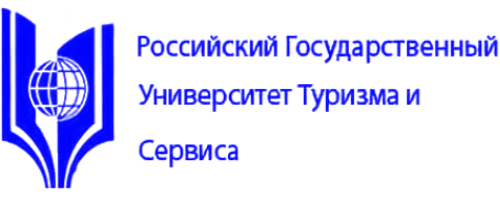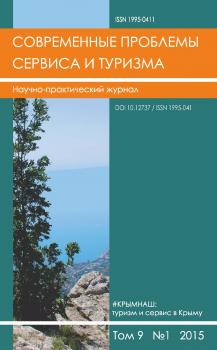The article deals with the origin, content and various interpretations of the concept of “tourist attraction”. The emergence of the term (in the form of word formation “memorability”) was associated with the appearance of the first Russian guidebooks at the end of the 18th century. The tourist attractions are considered as a kind of tourism resource used to organize educational and other tours and excursions. The article attempts to prove that not only cultural and historical objects can serve as tourist attractions, but also natural objects, and in some cases, processes and phenomena. Natural and cultural-historical objects and phenomena become tourist attractions when they are involved in tourism production activities. Often, the tourism business “constructs” the tourist attractions even in the absence of a recreational resource. The properties of the tourist attraction are a clear geographical reference, attractiveness, information significance, involvement in tourism and recreational activities. Thus, tourist attraction is a tourist-recreational resource, which is localized in space, has a structure, attractiveness, hierarchy, information significance and is involved in tourism production activities.
tourism, tourist attraction, natural attraction, tourism industry, tourist service.
1. Artemieva, O.A. (2010). Razvitie podhodov k klassifikacii turisticheskih resursov i ob’ektov pokaza za rubezhom [Development of approaches to the classification of tourism resources and tourist sites abroad]. Servis v Rossii i za rubezhom [Services in Russia and Abroad], 1, 120-125. (In Russ.).
2. Artemieva, O.A. (2010). Podhody k opredeleniju sushhnosti i klassifikacii turistskih resursov [Approaches to the definition of the essence and classification of tourist resources] // In collection: Marketing i sovremennost’ [Marketing and Modernity]. Moscow: El’f IPR. (In Russ.).
3. Bazhenova, E.V. (2013). Zhivotnye dostoprimechatel’nosti v kul’turnom prostranstve goroda (na primere Sankt-Peterburga) [Animals - sights in the cultural space of city (with the specimen of Saint-Petersburg)]. Vestnik Cheljabinskoj gosudarstvennoj akademii kul’tury i iskusstv [Herald of the Chelyabinsk State Academy of Culture and Arts], 3, 91-99. (In Russ.).
4. Birzhakov, M.B., & Nikiforov, V.I. (Ed.). (2000). Bol’shoj glossarij terminov mezhdunarodnogo turizma [The Great Glossary of Terms for the International Tourism]. St. Petersburg: Gerda Publ. House. (In Russ.).
5. Kuznecov, S.A. (Ed.). (2000). Bol’shoj tolkovyj slovar’ russkogo jazyka [Explanatory Dictionary of the Russian Language]. St. Petersburg: Norint. (In Russ.).
6. Byzova, N.M., & Smirennikova, E.V. (2009). Ohranjaemye prirodnye territorii, ob’ekty i prirodnye dostoprimechatel’nosti kak osnova razvitija ekoturizma v Arhangel’skoj oblasti [Protected areas, natural objects and sights as a basis for ecotourism development in the Arkhangelsk region]. Vestnik Severnogo (Arkticheskogo) federal’nogo universiteta. Serija: Estestvennye nauki [Vestnik of Northern (Arctic) Federal University. Series Environmental Research], 3, 11-17. (In Russ.).
7. Volkova, T.A., Karpova, Yu.I., Mishhenko, A.A., & Zadorozhnjaja, V.V. (2012). Mifologizacija rekreacionnogo prostranstva kak faktor osvoenija territorii [Mythologization of recreational space as a factor of territory development]. In Geograficheskie issledovanija Krasnodarskogo kraja [Geographical studies of Krasnodar Krai]: a monograph. Krasnodar: KGUFKSiT. (In Russ.).
8. Grigoriev, A. A. (2007). Prirodnye dostoprimechatel’nosti i pamjatniki nasledija kak ob’ekty stranovedenija [Natural sights of interest and cultural heritage monuments as objects of country study (regional geography)]. Vestnik Sankt-Peterburgskogo universiteta [Vestnik of Saint Petersburg University], 7(4), 38-50. (In Russ.).
9. Zorin, I. V. (2005). Fenomenologija puteshestvij. Ch. II. Mifologija puteshestvij [Travel Phenomenology. Part II. Mythology of Travels]. Moscow: RIAT. (In Russ.).
10. Kotljakov, V. M., & Komarova, A. I. (2013). Turizm: priroda, kul’tura, puteshestvija. Pjatijazychnyj slovar’ [Tourism: Nature, Culture, Travel: Five-Language Dictionary]. Moscow: Kodex Publ. House. (In Russ.).
11. Krylov, G. A. (2004). Etimologicheskij slovar’ russkogo jazyka [Etymological Dictionary of the Russian Language]. St. Petersburg: Viktorija plus. (In Russ.).
12. Kuskov, A.S., & Dzhaladjan, Yu. A. (2011). Turistskij biznes: slovar’-spravochnik [Tourism Business: a Glossary]. Moscow: FORUM. (In Russ.).
13. Efremova, T.F. (Ed.). (2001). Novyj slovar’ russkogo jazyka. Tolkovo-slovoobrazovatel’nyj [New Dictionary of the Russian language. Interpretative and Word-Building]. In two volumes. Vol. 1. Мoscow: Russkij jazyk. (In Russ.).
14. Nora, P., Ozuf, M., Pjuimezh, G. de, & Vinok, M. (1999). Nacija-pamjat’ [Nation-Memory]. In Francija-pamjat’ [France-Memory]. St. Petersburg: St. Petersburg Univ. Publ. (In Russ.).
15. Ozhegov, S.I., & Shvedova, N.Yu. (2006). Tolkovyj slovar’ russkogo jazyka [Explanatory Dictionary of the Russian Language]. Moscow: ITI Tehnologia. (In Russ.).
16. Onufrienko, G.F. (2007). Istoricheskaja dostoprimechatel’nost’ i turizm [Historic Attraction and Tourism]. Observatorija kul’tury [Observatory of Culture], 2, 74-76. (In Russ.).
17. Otnjukova, M. S. (2005). Social’noe konstruirovanie dostoprimechatel’nostej v turizme [Social construction of tourist attractions]: Candidate of Sociology thesis. Saratov. (In Russ.).
18. Rutsinskaya, I.I. (2011). Putevoditel’ kak instrument konstruirovanija regional’nyh dostoprimechatel’nostej (vtoraja polovina XIX-$5X vv.) [The Guidebook as a Tool for Designing Regional Sights (Second Half of the 19th century - early 20th century)]. Vestnik Moskovskogo un-ta. Ser. 19. Lingvistika i mezhkul’turnaja kommunikacija [Bulletin of Moscow University. Series 19. Linguistics and Cross-Cultural Communication], 1, 74-93. (In Russ.).
19. Rutsinskaya, I.I. (2011). Istoriko-kul’turnye dostoprimechatel’nosti kak «mesta pamjati» v Rossii vtoroj poloviny XIX - nachala XX vv.: Regional’nyj masshtab [Historical and cultural attractions as “places of memory” in Russia in the second half of the XIX - early XX centuries: Regional scale]. In Social’no-gumanitarnye problemy sovremennosti: chelovek, obshhestvo, i kul’tura [Social and humanitarian problems of modernity: man, society, and culture]: a monograph. Book 4. Krasnoyarsk: Nauchno-innovacionnyj center. (In Russ.).
20. Sazykin, A.M., & Glushko, A.A. (2016). Turistskaja dostoprimechatel’nost’: gnoseologicheskie aspekty definicii Tourist attraction: epistemological aspects of the definition]. In collection: Ekonomika. Servis. Kul’tura. Turizm (ESTK-2016) [Economics. Service. Culture. Tourism (ESCT-2016)]. Barnaul: AltGTU. (In Russ.).
21. Ushakov, D.N. (Ed.). (2009). Tolkovyj slovar’ russkogo jazyka [Explanatory Dictionary of the R Moscow: АSТ. (In Russ.).
22. Avanesova, G.A. & et al. (2002). Turizm, gostepriimstvo, servis: slovar’-spravochnik [Tourism, Glossary]. Moscow: Aspekt Press. (In Russ.).
23. Chernega, A.A. (2016). Social’noe konstruirovanie turisticheskih dostoprimechatel’nostej kak faktor razvitija malyh gorodov Rossii [The social constructing tourist attractions as a development factor of small towns in Russia]: Candidate of Sociology thesis. St. Petersburg. (In Russ.).
24. Botti, L., Peypoch, N., & Solonandrasana, B. (2008). Time and tourism attraction. Tourism Management, 29(3), 594-596. doi:https://doi.org/10.1016/j.tourman.2007.02.011.
25. Deng, J., King, B., & Bauer, T. (2002). Evaluating natural attractions for tourism. Annals of Tourism Research, 29(2), 422-438. doi:https://doi.org/10.1016/s0160-7383 (01) 00068-8.
26. Leiper, N. (1979). The framework of tourism: towards a definition of tourism, tourist, and the tourist industry. Annals of Tourism Research, 6(4), 390-407. doi:https://doi.org/10.1177/004728758001900184.
27. Lew, A. A., Hall, С.М., & Timothy, D.J. (2008). World Geography of Travel and Tourism: A Regional Approach. Amsterdam: Elsevier.
28. Lew, A.A. (1987). A framework of tourist attraction research. Annals of Tourism Research, 14(4), 553-575. doi:https://doi.org/10.1016/0160-7383 (87) 90071-5.
29. Shoval, N., & Raveh, A. (2004). Categorization of tourist attractions and the modeling of tourist cities: based on the co-plot method of multivariate analysis. Tourism Management, 25(6), 741-750. doi:https://doi.org/10.1016/j.tourman. 2003.09.005





